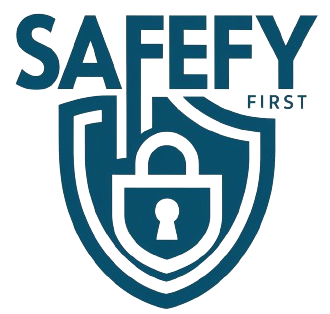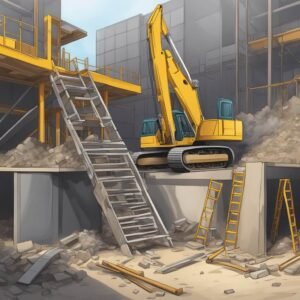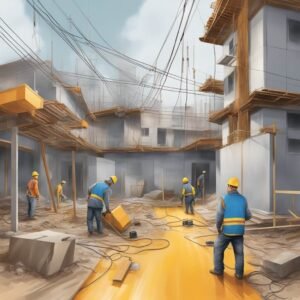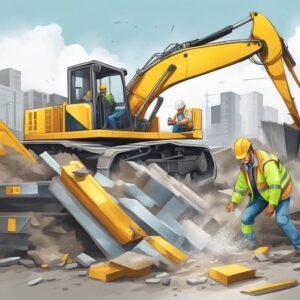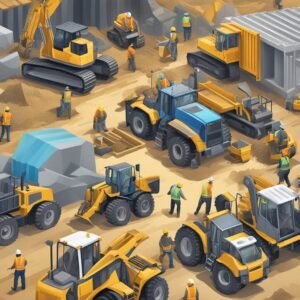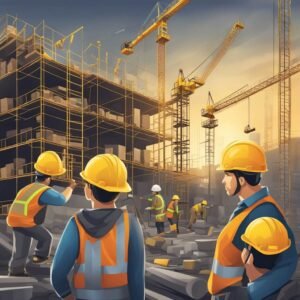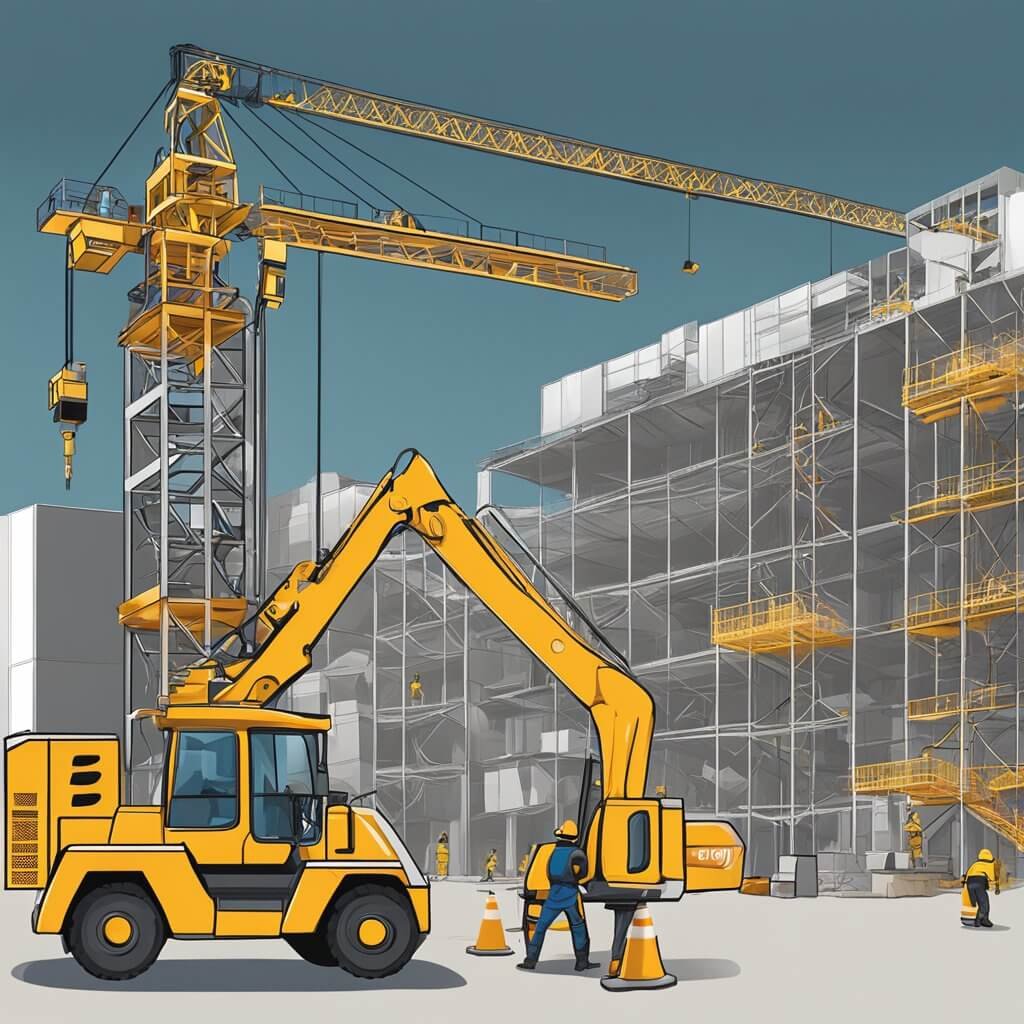
Construction sites are known to be some of the most dangerous workplaces, with a high potential for accidents and injuries. Despite the implementation of safety regulations, construction workers are still exposed to various safety risks every day. It is crucial for construction workers, supervisors, and managers to identify and mitigate these risks to ensure a safe and healthy work environment. In this article, we will discuss the top 5 safety risks on construction sites and provide some tips on how to prevent them.
Fall hazards are one of the most significant safety risks on construction sites. Falls from heights can result in severe injuries or even fatalities. Construction workers are often required to work at elevated positions, such as on scaffolds, ladders, or rooftops, which increases their risk of falling. It is essential to implement safety measures such as guardrails, safety nets, and personal fall arrest systems to prevent falls and protect workers from serious injuries.
Electrical risks are another significant safety hazard on construction sites. Workers are often exposed to live electrical wires, which can cause electric shocks, burns, or electrocution. It is crucial to ensure that all electrical equipment and tools are properly grounded and that workers are trained on how to handle them safely. Personal protective equipment such as rubber gloves, boots, and mats can also provide additional protection against electrical hazards.
Key Takeaways
- Fall hazards and electrical risks are two of the most significant safety risks on construction sites.
- Struck-by incidents and caught-in/between hazards are also common safety risks that workers should be aware of.
- Proper training, safety equipment, and hazard identification are essential to prevent accidents and injuries on construction sites.
Fall Hazards
Construction sites are known for their inherent risks, and fall hazards are among the most common and dangerous. Falls can result in serious injury or even death, making it crucial for workers and employers to take the necessary precautions to prevent them. This section will cover the three most common fall hazards on construction sites: scaffolding issues, ladder safety, and unprotected edges.
Scaffolding Issues
Scaffolding is a common sight on construction sites, but it can pose a serious fall hazard if not used properly. Some of the most common scaffolding issues that can lead to falls include:
- Improper assembly or disassembly
- Overloading the scaffolding
- Using damaged or defective scaffolding
- Failing to use guardrails or other fall protection measures
To prevent falls from scaffolding, workers should receive proper training on how to assemble, use, and disassemble scaffolding safely. Employers should also ensure that all scaffolding is inspected regularly and that workers are provided with appropriate fall protection equipment.
Ladder Safety
Ladders are another common tool on construction sites, but they can be dangerous if not used correctly. Some of the most common ladder-related fall hazards include:
- Using a damaged or defective ladder
- Placing the ladder on an unstable surface
- Overreaching or leaning too far to one side
- Failing to secure the ladder properly
To prevent falls from ladders, workers should be trained on how to choose the right ladder for the job, how to inspect the ladder for damage, and how to use the ladder safely. Employers should also ensure that workers have access to appropriate fall protection equipment when using ladders.
Unprotected Edges
Unprotected edges, such as roof edges or open floor edges, can be a serious fall hazard on construction sites. Some of the most common causes of falls from unprotected edges include:
- Failing to use guardrails or other fall protection measures
- Working too close to the edge without proper fall protection equipment
- Stepping or tripping over debris near the edge
To prevent falls from unprotected edges, workers should always use appropriate fall protection equipment when working near the edge. Employers should also ensure that all workers are trained on how to recognize and avoid fall hazards on the job site.
By taking these precautions and being aware of the most common fall hazards on construction sites, workers and employers can help prevent serious injuries and fatalities.
Electrical risks
Construction sites often involve working with electrical equipment and power lines, which can pose serious safety risks if not handled properly. Electrical risks are among the most common hazards on construction sites.
Power Line Contact
One of the most significant electrical risks on construction sites is power line contact. Workers may accidentally come into contact
with overhead power lines, which can cause severe injuries or even death. Even non-contact with power lines can be hazardous, as electrical current can arc and cause burns or electrocution.
To prevent power line contact, workers should always be aware of the location of power lines and keep a safe distance. It is also important to use caution when operating equipment near power lines, such as cranes, scaffolding, and ladders.
Improper Use of Equipment
Another electrical hazard on construction sites is the improper use of equipment. Workers may use equipment that is not properly grounded or that has damaged cords, which can cause electrical shock or electrocution.
To prevent this, workers should ensure that all equipment is properly grounded and that cords are in good condition before use. It is also important to use equipment that is designed for the specific task at hand and to follow all safety guidelines and instructions.
By taking these precautions and being aware of electrical risks on construction sites, workers can help to prevent accidents and ensure a safe work environment.
Struck-By Incidents
Construction sites are inherently dangerous places, and one of the biggest risks faced by workers is being struck by objects. Struck-by incidents can occur in many forms, such as falling objects or vehicle accidents. To prevent these incidents, it is important for workers to be aware of the risks and take appropriate safety measures.
Falling Objects
Falling objects are a common hazard on construction sites. These can include tools, materials, or debris that fall from elevated work areas. The impact of a
falling object can cause serious injury or even death. To prevent these incidents, workers should wear hard hats and safety glasses at all times. Additionally, tools and materials should be properly secured when working at heights.
Vehicle Accidents
Construction sites are often busy with various vehicles, including trucks, cranes, and forklifts. Vehicle accidents can occur when workers are struck by moving vehicles or when vehicles collide with each other
To prevent these incidents, workers should always be aware of their surroundings and follow established traffic patterns. Additionally, vehicles should be inspected regularly to ensure they are in good working condition.
By taking these precautions, workers can minimize the risks of struck-by incidents on construction sites. However, it is important to remember that accidents can still happen. Workers should always be vigilant and report any safety concerns to their supervisors immediately.
Caught-In/Between Hazards
Construction sites are known for their high-risk nature, and caught-in/between hazards are among the most dangerous. These hazards occur when a worker is caught, crushed, squeezed, or pinched between two or more objects. The following are some examples of caught-in/between hazards that workers may face on construction sites.
Trench Collapses
Trench collapses are a significant risk on construction sites, especially when workers are working in deep trenches. According to OSHA, trench collapses are responsible for dozens of fatalities every year. Workers who are buried in a trench collapse can suffer from suffocation, crush injuries, and other serious injuries.
To prevent trench collapses, employers should ensure that trenches are properly shored, sloped, or otherwise supported. Workers should also be trained on safe excavation practices and should never enter a trench that is not properly protected.
Machinery Without Guards
Machinery without guards is another common caught-in/between hazard on construction sites. Workers who come into contact with unguarded machinery can suffer from amputations, crush injuries, and other serious injuries.
To prevent these types of accidents, employers should ensure that all machinery is properly guarded. Workers should also be trained on the safe use of machinery and should never remove or bypass guards.
By taking these precautions, employers can help prevent caught-in/between hazards and keep workers safe on construction sites.
Personal Protective Equipment
construction sites are known for their potential safety hazards. Personal Protective Equipment (PPE) is a crucial aspect of construction safety. It includes equipment that workers wear to protect themselves from hazards that can cause serious injuries or illnesses. Here are some common PPE safety risks on construction sites.
Lack of Head Protection
Head injuries are a common occurrence on construction sites. Hard hats are the most common form of head protection used on construction sites. However, some workers may not wear them, or they may wear them incorrectly. This can happen due to a lack of training or discomfort. Employers must ensure that workers are trained in the proper use of hard hats and that they wear them at all times while on the construction site.
Inadequate Eye and Face Protection
Eye and face injuries are also common on construction sites. Workers can be exposed to flying debris, chemicals, and other hazards that can cause serious eye and face injuries. Safety glasses, goggles, and face shields are all types of PPE that can protect workers from these hazards. However, workers may not wear them because they find them uncomfortable or because they are not provided with the proper equipment. Employers must ensure that workers are provided with the appropriate eye and face protection and that they wear them while on the construction site.
In conclusion, PPE is a crucial aspect of construction safety. Employers must ensure that workers are trained in the proper use of PPE and that they wear it at all times while on the construction site. By doing so, they can prevent serious injuries and illnesses on the job.
Frequently Asked Questions
What are the most common causes of accidents on construction sites?
Construction sites are inherently dangerous places, and accidents can happen for a variety of reasons. Some of the most common causes of accidents on construction sites include falls from heights, electrocutions, being struck by falling objects, and being caught in between equipment or objects. In addition, accidents can also occur due to improper use of equipment, lack of training, and failure to follow safety protocols.
How can construction workers minimize the risk of falls?
Falls are one of the most common causes of injuries and fatalities on construction sites. To minimize the risk of falls, construction workers should always wear appropriate personal protective equipment (PPE) such as hard hats, safety harnesses, and non-slip footwear. Workers should also be trained on how to properly use ladders, scaffolds, and other equipment to prevent falls. Additionally, construction sites should have proper guardrails, safety nets, and other fall protection systems in place.
What are the primary health risks faced by construction workers?
Construction workers are exposed to a variety of health risks on the job, including respiratory problems from exposure to dust and other airborne particles, hearing loss from exposure to loud noises, and skin problems from exposure to hazardous chemicals. In addition, construction workers may also face heat stress, cold stress, and other weather-related health risks.
Which construction site hazards are most likely to lead to fatalities?
According to the Occupational Safety and Health Administration (OSHA), the “Fatal Four” hazards on construction sites include falls, electrocutions, being struck by objects, and being caught in between equipment or objects. These hazards account for the majority of fatalities on construction sites.
What safety protocols are essential to prevent construction site injuries?
To prevent construction site injuries, it is essential to have proper safety protocols in place. This includes providing appropriate PPE to workers, conducting regular safety training, having proper signage and warning systems in place, and ensuring that equipment is properly maintained and inspected. Additionally, it is important to have a safety culture that emphasizes the importance of following safety protocols and reporting any potential hazards.
How can construction sites effectively manage and control potential hazards?
Effective hazard management and control requires a comprehensive approach that involves identifying potential hazards, assessing the risks associated with those hazards, and implementing appropriate controls to mitigate those risks. This may include engineering controls such as installing guardrails or safety nets, administrative controls such as implementing safety policies and procedures, and personal protective equipment. Regular inspections and audits can also help identify potential hazards and ensure that controls are working effectively.
